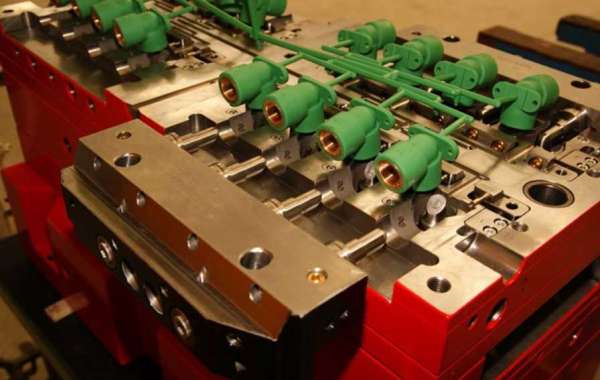In the ever-evolving landscape of manufacturing, innovation continues to pave the way for enhanced product design and functionality. One such revolutionary technique gaining momentum is plastic overmolding. By combining the versatility of plastics with traditional materials, manufacturers have unlocked a host of advantages, allowing them to create products that stand out in terms of design, durability, and performance. This article delves into the world of plastic overmolding, exploring its benefits, applications, processes, and design considerations.
Understanding Plastic Overmolding
Plastic overmolding is a manufacturing process that involves molding plastic material over an existing substrate, typically made of metal or another material. The process creates a strong bond between the two materials, resulting in a single integrated component with unique properties that neither material could achieve independently.
Advantages of Plastic Overmolding
Enhanced Design Flexibility
One of the primary advantages of plastic overmolding is the unparalleled design flexibility it offers. Manufacturers can now create complex and ergonomic shapes that were previously unattainable. The ability to use different materials for specific areas of a product allows for improved aesthetics and functionality.
Cost-Effectiveness
Plastic overmolding eliminates the need for additional assembly processes and reduces the number of components required. This streamlining not only saves production time but also cuts down on labor and material costs, making it a cost-effective solution.
Improved Product Durability
The combination of materials in plastic overmolding often results in enhanced product durability. The protective plastic layer shields the underlying substrate from environmental factors, such as moisture, chemicals, and impacts, significantly extending the product's lifespan.
Enhanced Functionality and Performance
By strategically choosing materials, manufacturers can imbue products with superior characteristics. For instance, a product could have a rigid metal core for structural support while incorporating soft and ergonomic plastic grips for user comfort.
Reduced Assembly Time and Costs
Traditional manufacturing methods often require multiple components to be assembled, which can be time-consuming and costly. Plastic overmolding consolidates parts, reducing assembly time and expenses.
Applications of Plastic Overmolding
Plastic overmolding finds applications across various industries, including:
Automotive Industry
Automotive manufacturers use plastic overmolding to create components such as steering wheels, gearshifts, and door handles, enhancing both aesthetics and functionality.
Electronics and Electrical Appliances
In the electronics sector, plastic overmolding is used for producing keypads, remote controls, and connectors, providing superior grip and protection.
Medical Devices
Medical devices benefit from plastic overmolding due to the combination of antimicrobial properties, ergonomic design, and ease of sterilization.
Consumer Goods
From toothbrushes with comfortable grips to power tools with vibration-dampening handles, plastic overmolding enhances numerous consumer goods.
Aerospace Industry
The aerospace industry embraces plastic overmolding for creating lightweight yet robust components for aircraft and spacecraft.
Materials Used in Plastic Overmolding
The success of plastic overmolding lies in the careful selection of materials. Common materials used include:
Thermoplastics
Thermoplastics, such as polypropylene and ABS, are popular choices due to their moldability and recyclability.
Thermosets
Thermosetting plastics, like epoxy and phenolic resins, provide excellent heat and chemical resistance.
Elastomers
Elastomers like silicone and rubber offer flexibility and cushioning properties.
Plastic Overmolding Process
Several plastic overmolding techniques are available, including:
Injection Molding
The most common method where molten plastic is injected into a mold cavity over the substrate.
Insert Molding
Involves placing a pre-formed substrate into the mold, which is then overmolded with plastic.
Two-Shot Molding
Utilizes two separate materials injected into the mold in two stages, bonding together during the process.
Three-Shot Molding
Similar to two-shot molding, but with three different materials for more complex designs.
Design Considerations for Plastic Overmolding
To ensure successful overmolding, several design factors must be considered:
Material Compatibility
Choosing materials with suitable bonding properties is critical to achieving a strong bond between the substrate and plastic.
Part Design
Designing the part with overmolding in mind helps in achieving better integration and aesthetics.
Surface Preparation
Properly preparing the substrate surface enhances adhesion between the materials.
Mold Design
Optimizing the mold design ensures uniformity and reduces defects.
Overcoming Challenges in Plastic Overmolding
While plastic overmolding offers numerous benefits, it also presents some challenges that manufacturers must address:
Material Bonding Issues
Ensuring a strong bond between the plastic and substrate can be challenging with certain material combinations.
Warping and Shrinkage
Differences in thermal properties between materials can lead to warping or shrinkage during cooling.
Dimensional Accuracy
Maintaining tight tolerances can be difficult due to material interactions and cooling variations.
Tooling Complexity
The complexity of molds can impact production costs and timelines.
Sustainability Aspects of Plastic Overmolding
In the pursuit of sustainable practices, plastic overmolding plays a role in:
Recycling and Circular Economy
Using recyclable plastics and designing products for disassembly promotes a circular economy.
Lightweighting and Fuel Efficiency
By reducing the overall weight of products, plastic overmolding contributes to improved fuel efficiency.
Conclusion
Plastic overmolding has revolutionized product design and manufacturing, offering unparalleled design flexibility, cost-effectiveness, and durability. From automotive to aerospace, its applications span across various industries, leading to enhanced products that cater to both form and function. As manufacturers continue to explore innovative material combinations and refine the overmolding process, we can expect even more groundbreaking advancements in the years to come.
FAQs
- Is plastic overmolding suitable for high-volume production? Yes, plastic overmolding is well-suited for high-volume production as it streamlines the manufacturing process and reduces assembly time.
- Can different types of plastics be overmolded together? Yes, different types of plastics can be overmolded together, provided they exhibit suitable bonding properties.
- Does plastic overmolding enhance product aesthetics? Absolutely, plastic overmolding allows for intricate designs and ergonomic shapes, significantly improving product aesthetics.
- Are there any limitations to the size of parts that can be overmolded? The size of parts that can be overmolded depends on the capacity of the molding equipment, but it is generally suitable for a wide range of component sizes.
- How does plastic overmolding contribute to sustainable practices? Plastic overmolding supports sustainability by using recyclable materials and reducing overall product weight, which positively impacts fuel efficiency.








